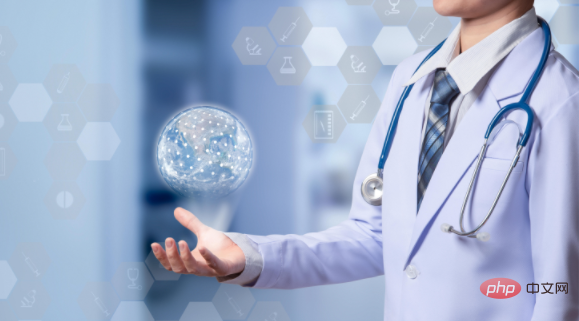

The medical industry has become one of the largest industries in the Indian economic system. According to a report by NITIAyog, the compound annual growth rate of the Indian medical industry has reached 22% since 2016, creating millions of jobs and will multiply in the future. How does a country with a lack of clinical resources and severe imbalances in care distribution achieve such a high rate of development? Machine learning is a key factor.
The medical environment is flooded with large amounts of complex data from clinician notes, medical equipment, laboratories and other environments. A variety of remote patient wearables are adding to the stress. Electronic health records help drive information digitization, but their primary mission is not to reduce front-end administrative workload or provide at-a-glance decision support.
All incoming data is valuable when you can quickly gain insights and take appropriate steps to improve care delivery. Machine learning can make this possible, especially for digitized data sets with clear patterns. Machine learning can not only collect data from different sources, but also unify this data and perform the tasks that doctors, nurses and other members of the medical team can do. The complex calculations needed to quickly gain insight into raw physiological, behavioral and imaging information.
Machine learning reduces the workload of surgeons, radiologists, and pathologists by leveraging algorithms to gain insights. Automated workflows designed around the way healthcare teams actually work are often used to simplify information sharing and collaboration between each other. Typical applications include:
In the past, accurate predictive analysis of the next steps to be taken for a specific patient often encountered two obstacles: the burden of collecting data; The calculation is difficult. With machine learning, the speed of data collection and computational complexity no longer depend on how much work humans can do manually. People can use powerful algorithms to tailor treatment decisions based on the specific conditions of each patient, thereby obtaining better results. result.
India is poised for an exciting digital transformation in healthcare. Penetration of machine learning and other innovative technologies, including automation and other AI technologies like natural language processing, is soaring, and 5G is just around the corner. There is currently a vibrant ecosystem emerging in India that includes not only startups but also established health technology companies, a growing population filling new roles, and healthcare providers having a lot of awareness of technological approaches. , they can do more with less manpower, and the public supports government investment in evolving health service delivery capabilities.
Since 2020, due to the COVID-19 pandemic, the Indian government has been focusing on investing in India’s medical infrastructure, which has also made many technologies Companies are able to venture into the healthcare space and innovate, contributing to the improvement of healthcare facilities in India. Under the Digital India Initiative, the Indian government recently announced the launch of the Ayushman Bharat Health Mission (ABDM) program aimed at creating an Indian digital health ecosystem. The program focuses on creating digital health records for citizens and their families to access and share digitally. Under the program, citizens will receive a randomly generated 14-digit number as the only way to identify an individual, verify their identity, and pass their health records to multiple systems and stakeholders with informed consent. square. In addition, inclusivity is one of the key principles of the ABDM initiative. The digital health ecosystem created by ABDM supports the continuity of primary, secondary and tertiary healthcare systems in a seamless manner, helping to deliver care through various technological interventions such as telemedicine. Health services, especially in remote and rural areas.
With the Indian government’s push to strengthen digital healthcare infrastructure, digital healthcare startups in India offer a wide range of solutions. The startups in India’s healthcare ecosystem go far beyond specific diseases, therapeutic areas, geographies, products type, and service or business model. In India, making healthcare services affordable to citizens remains an urgent issue, and in this context, citizens will benefit greatly from the development of the digital healthcare industry. ABDM is a unique strategy to unify India's healthcare system and promote innovation in the industry. It remains to be seen how digital health will be viewed from a legal perspective, given that both governments and innovators are concerned about the public interest. Although there is still a long way to go, artificial intelligence and machine learning technologies have gained a foothold in India over the past year, and the future of this industry is expected to be promising.
The above is the detailed content of Machine learning is driving change in India's healthcare industry. For more information, please follow other related articles on the PHP Chinese website!




